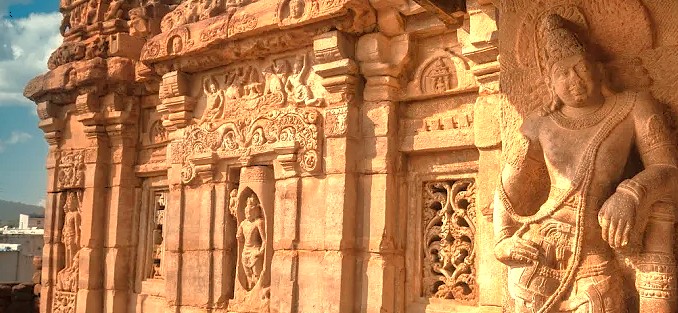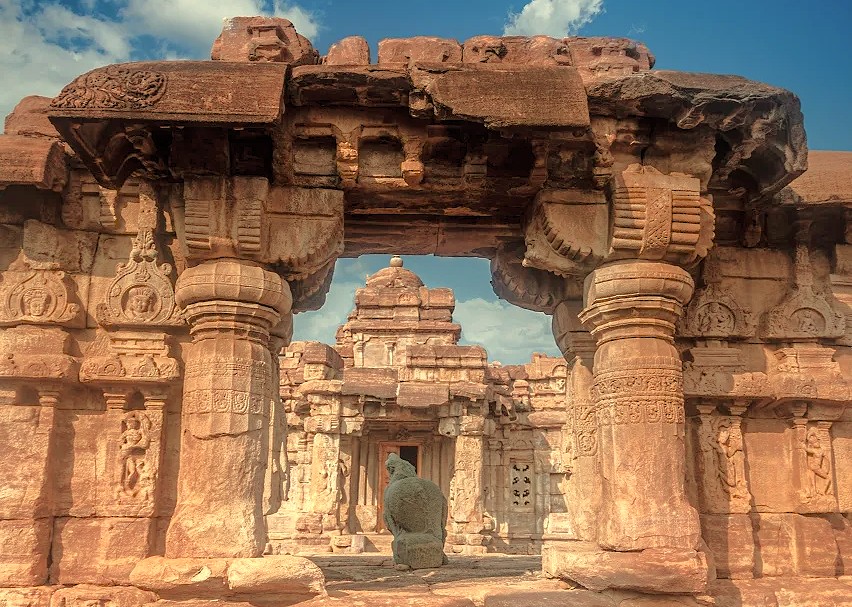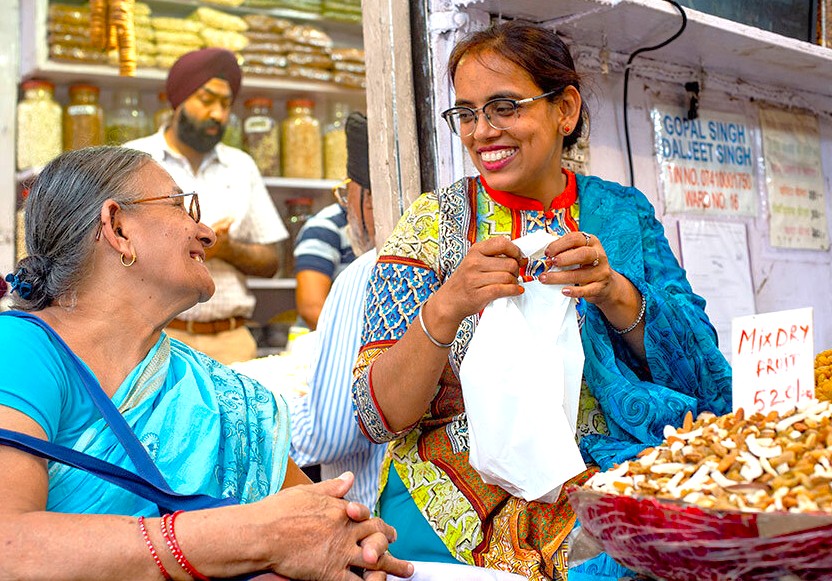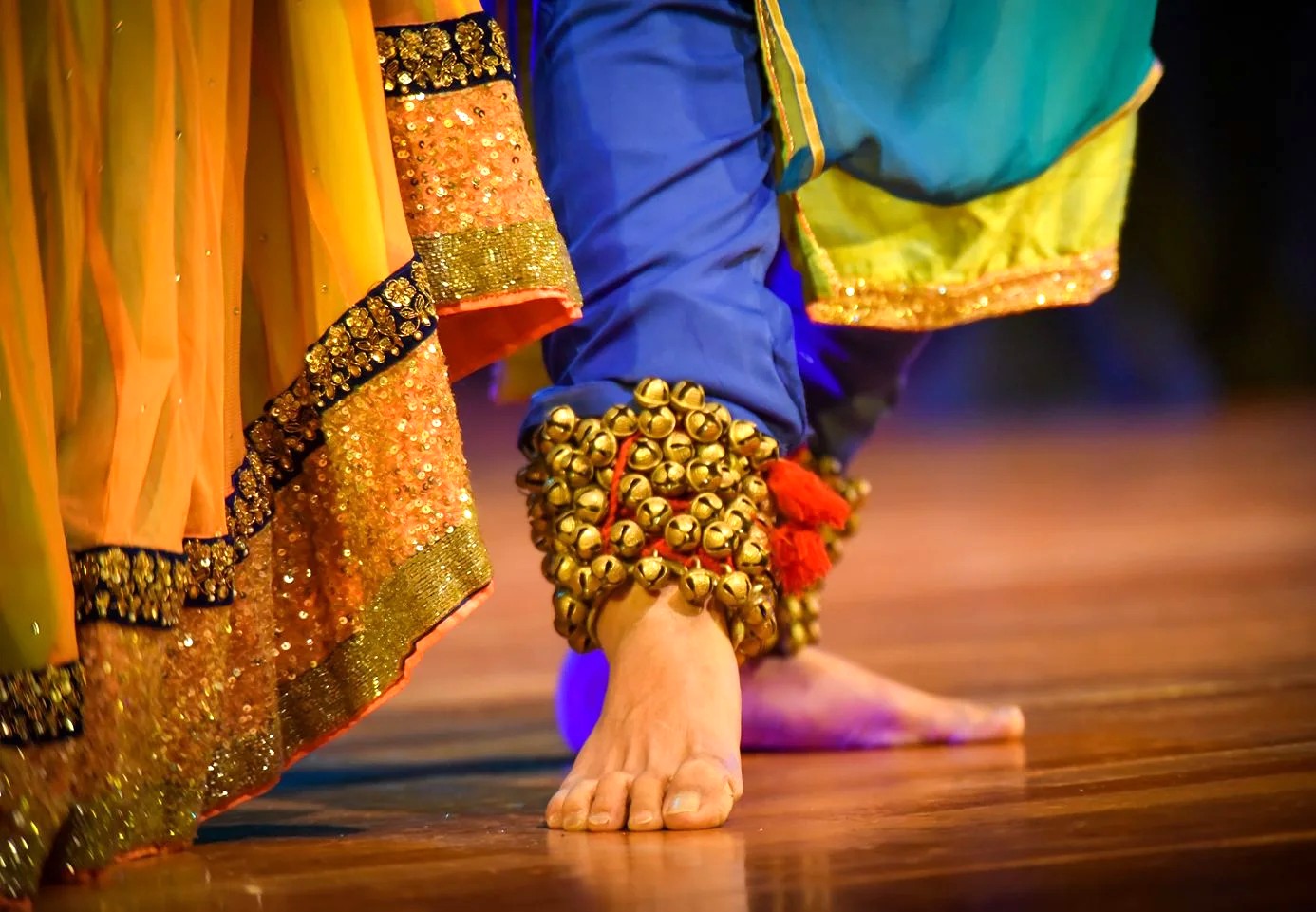Echoes of Ancient Lands
Sangameshwara Temple Pattadakal India
Mother Masala Tours
Where Water and Stone Shape History
Sangameshwara Temple Pattadakal India. A monument set beside the Malaprabha River in Northern Karnataka. The name means “place of coronation stone,” denoting where ancient kings were crowned. Long before the temple’s halls stood here, the riverbanks nurtured prehistoric tribes - a fact proved by old pottery and ash mounds unearthed nearby. Construction of Sangameshwara Temple was started around 720 CE, under the direction of Chalukya Dynasty ruler Vijayaditya. This edifice marked an era of experiment - combining classic Dravida and Nagara building design in a way not common elsewhere in India.

Sangameshwara Temple Pattadakal India: Sacred Spaces
Inside these timeless Unesco stone halls, we notice classic carved lingams, intricate bronzework lamps, and substantial granite panels with early royal inscriptions in Sanskrit and Kannada. A unique copper-clad pulpit - once used for kingly oaths stands just off the main axis. Among relics are sets of ceremonial bells, indented floor slabs for ritual headwashing, and a turtle-carved basin said to bless fertility. The sanctum itself preserves the original arrangement of guardian deities around Shiva’s figure, a composition not seen in nearby temples. Festival banners in faded cotton, stored in ancient niches, reflect traditions still active today.
Ancient Mosaics: Impeccable Craftsmanship

We’re surrounded by artistry that connects eras. Stone panels record patron Queen Jayanti overseeing completion. Every wall and ceiling bears unique touches - floral rosettes, bands of elephants and dancers, celestial beings with detailed jewelry, and medallion-discs carved to evoke ancient rituals. The hall’s doorways alternate Dravida motifs and upright Nagara profiles in seamless formation, a composition prized by art historians for its balance and innovation. The use of local sandstone, drilled for strength and fitted to resist the river’s humidity, testifies to a refined eye for both beauty and longevity.
The Pulse of the Local Community
Sangameshwara Temple Pattadakal India. Life here is shaped by the rhythms of field and river. We are greeted with open arms - hospitality woven into daily routines and classic festivals alike. People here speak a melodic blend of Kannada and Sanskrit; seniors engage youth in folk stories, hand-dyeing, and music.
Capturing the Magic: A Photographic Haven

Photography at Sangameshmaar Temple Pattadakal reveals ancient stone carvings and architectural details from centuries past. The temple complex offers multiple angles and perspectives as we explore different sections throughout the day. Morning light creates interesting shadows across the carved pillars and entrance ways while revealing intricate designs. Local people move through the area going about their daily activities as we photograph the surrounding streets and markets. The nearby village lanes provide candid shots of residents walking, working, and socializing in their natural environment.
A Culinary Journey: Savor the Flavour
Food is a community celebration. Traditional favorites include ragi mudde (soft millet balls), spicy brinjal curry, coconut chutney, and classic sweets like jaggery rice pudding. Cooked over fire in copper pots, meals are served on banana leaves or in simple metal bowls. Ingredients - lentils, brinjal, greens, and river fish - come straight from local fields and water. At festivals, you will find sesame and peanut laddus, savory dosas, and shared fruit platters.
Festivals of Devotion: Honouring the Sacred and the Divine

The Pattadakal Dance Festival happens each year in January - February at the UNESCO temples at this location. The Government of Karnataka organizes the festival as a tribute to Chalukyan architectural and cultural legacy from centuries past. Classical dance performances reveal traditional art forms on temporary stages set within the temple grounds during the event. Local and visiting dancers perform classical styles across multiple performance days throughout. A craft market operates alongside the dance performances revealing traditional arts and handmade items.
Ancient Technologies: Sacred Sound, Geometry & Astrological Influences
Sangameshwara Temple Pattadakal India. Built on a Vastu grid, this temple’s sanctum aligns mathematically to sunrise at equinox. Its raised dome structure allows chant sound - notably 432 Hz, part of the Solfeggio scale, to echo naturally, adding a peaceful physical resonance to every ceremony. Sunlight crosses the shrines in measured lines, signaling when festivals begin.
The Connection with the Gods

King Vijayaditya's dream of the river led him to install the lingam at this confluence location revealing divine will. The myths describe how Shiva interacts across realms showing his many forms and cosmic power. Parvati appears in these carved stories as Shiva's partner demonstrating their sacred connection and divine bond. Ganga the river goddess flows through mythic narratives linking water with blessing and celestial transformation across the stone panels. Celestial musicians surround these deities in scenes revealing heavenly accompaniment to divine events and cosmic happenings.
Serendipitous Meetings: Beyond the Main Path
Stroll outside and you’ll find potters shaping festival lamps, dyers preparing colored threads, and small flour mills turning the day’s harvest. Elderly musicians often gather near market stalls with simple drums and wind instruments, recalling ballads once performed for kings. Herbalists share recipes under shade, groups tie flower garlands, and skilled hands craft bangles from river shells.
Resilience and Renewal: Overcoming Adversity’s: Challenges

Flood damage in 1914 and again in 1972 prompted urgent community repairs with families pooling their resources to help. Skilled masons returned to the site to restore the lost sculptures and other damaged elements from the flooding. During a 17th-century raid, outer murals sustained considerable harm and were later painstakingly restored by subsequent generations. A dry spell in the 1880s prompted new water collection innovations including the famous turtle basin’s deeper carving. The 1980s saw another round of modern conservation work completed by the Archaeological Survey of India.
Urban Legends: Strange Sightings, Myths and Mysteries
Tales told at dusk describe glowing balls of light seen near the Nandi Statue, faint flute music from the empty mandapa, or a shimmering image glimpsed outside the sanctum at solstice. Old-timers recall how a boulder once rolled across the main path after midnight - unmoved again till another festival. Folk believe the river occasionally “speaks” in a clear voice at the meeting of seasons, echoing the unity for which the temple is named. Each legend is a part of the living narrative carried by every generation.
India: Can’t be explained, only lived - Go Beyond the Ordinary

Join us as we explore stone halls set by the river, with sounds of music and scents of smoke and food. These are the kinds of moments we experience here in this particular location. You will feel the cool grass underfoot while discovering stories held within every ancient wall. A certain atmosphere of calm defines the surroundings providing a unique setting for our journey. We invite you for an exploration that goes beyond the standard tour descriptions. The area reveals its character through these simple, direct encounters with the place itself.
Symphony of Generosity: Offerings from Wanderers to Residents
Sangameshwara Temple Pattadakal India. The market provides a place for direct interaction between us and local families. Our purchases of handmade crafts and woodcarvings provide income for the artisans. In return, we receive authentic items that represent the area's culture. These exchanges create a lively and pleasant atmosphere for everyone. This direct engagement allows for a straightforward connection between residents and us as travelers.